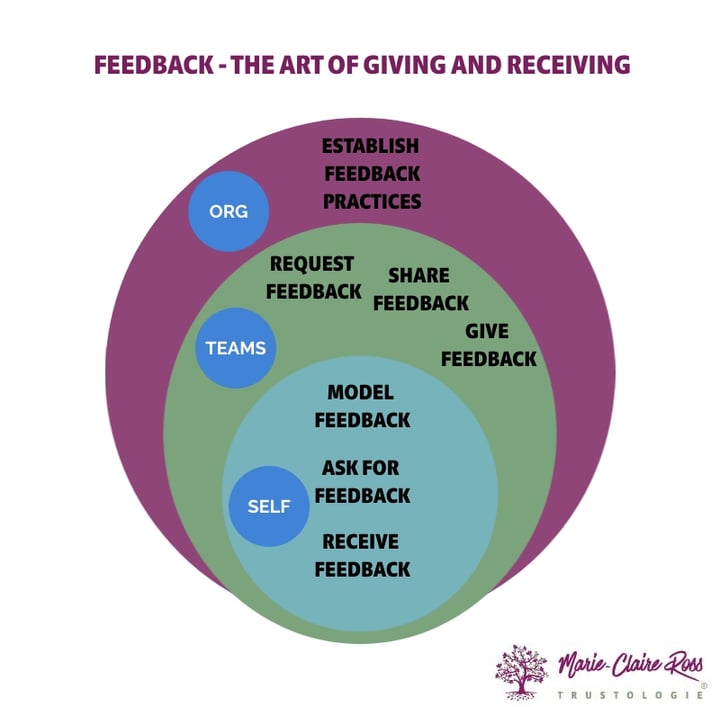
Despite what collaboration software experts would have you believe, few companies have big issues with trust within teams. When it comes to improving trust within...
With the ever-changing landscape of business needs, business leaders must constantly adapt and readjust their strategies.
Frequently, I find leaders seeking affirmation and validation that they (and their team) are doing a good job. Not realising, they are oblivious to unmet needs, mismatched expectations and ignoring data that points to a contrary reality.
Unfortunately, if leaders aren't seeking corrective feedback and making regular adjustments, they can often find themselves out of tune making it difficult to get back on track.
The telltale signs are that their team works on the wrong priorities, misses deadlines, drowns in drama, comes up against constant roadblocks or gets dragged down by low performers. While leaders themselves actively resist change, fall into a fixed mindset and are low in situational confidence ("I don't know what's going on or what I'm doing").
As business needs continually shift, leaders need to be able to thrive amid ambiguity. It requires continual recalibration and the best way to do that is to ask and give feedback.
Asking and giving for feedback needs to be multidirectional. Let me take you through my feedback culture model to understand what I mean.

As the leader, you model the behaviours in the team.
Learning how to ask for feedback about your leadership and act on it - sends a powerful message to your team that personal development is important.
Asking for feedback is the only way to gather real information about how your words and actions affect others. Rather than relying on one source, it's ideal to take input from multiple sources and then figure the best way to go forward. The better at this we become, the more likely we improve our confidence in knowing we can adapt and figure things out when things change.
Of course, how you ask for feedback matters as well. For feedback to be useful and easy to give by the recipient, you have to make it specific. Asking your boss or team member "Do you have any feedback for me?" is a complete waste of time.
Humans fear hurting people, so many people will give vague information, so as to not upset you or because they don't know what to say. Instead, get more specific by letting people know in advance you want their feedback. For example, before a presentation, you could say "With this sales presentation I'm going to do, could you please watch me and give me specific information on how I could sound more confident and improve my impact."
And then the next trick is receiving feedback. Make sure you listen, don't act defensive and thank the feedback giver. If it makes sense to take action on it, do so. Leaders who take feedback as a positive (and don't let it get them down), do something with it and learn quickly from their mistakes are great role models for their team.
Asking specifically for the information you want and then providing safe avenues to share that will not only make it easier for people to give you some great feedback, but it will increase the quality of contributions.
According to a study in Sloan Management Review, leaders who actively sort and integrate feedback have a 60% increase in their ability to change and a 45% improvement in interpersonal relationships with their teams.
To stay ahead of the curve requires executives systemise the collection of both internal and external data to make the right decisions. Without this, organisations are at risk of being in their own hubris bubble and falling behind.
It involves having a clear understanding of the external environment using secondary information – for example, consumer and social developments, trends, changes in technology, product innovation, and distribution. Typically, this information is quantitative and provides a one-sided perspective.
The best data is primary and is a combination of quantitative metrics such as customer satisfaction and employee engagement results combined with qualitative insights.
Successful companies do the qualitative side well. Each week, leaders spend actual face-to-face time asking customers and employees how things are going. This includes industry-based conversations (including talking to advisors) and noting customer observations.
Importantly, there needs to be the right feedback loops that ensure that information from the frontline is collected and actioned upon by senior leaders. This helps build trust, ensures people feel heard.
With the right market, customer and employee feedback, an outside-in perspective helps correctly forecast and formulate the right strategic decisions to ensure innovation and growth.
Innovation is an ongoing process. Encouraging your team to constantly seek out new ideas and ways to improve ensures they cope in a demanding environment where targets are constantly shifting.
As Marshall Goldsmith, the fame business coach says "Feedback - both the act of giving and taking it - is our first step in becoming smarter and more mindful about the connection between our environment and our behaviour."
Effective leaders master the art of giving and receiving feedback. They actively seek input from various sources, including their teams and external stakeholders, while also providing constructive feedback to their employees, teams, and superiors.
This fosters a culture of feedback within their teams, promoting adaptability and innovation. At its core, this approach requires a growth mindset that views changing circumstances and evolving objectives as opportunities for personal growth and learning. Rather than shying away from criticism or solely seeking positive feedback, these leaders courageously confront challenges and demonstrate positive behaviours to inspire their teams.

Despite what collaboration software experts would have you believe, few companies have big issues with trust within teams. When it comes to improving trust within...

On August 5, 1997, Korean Air airplane Flight 801, crashed killing 228 people.